Some of the most frequent fliers at my bird feeder are several birds who nest and live mostly on the ground. These include towhees, dark-eyed juncos, song sparrows, white-throated sparrows, and fox sparrows. The white-throated sparrows and dark-eyed juncos live on the ground, but nest further north, they live at Coho from fall through spring. The fox sparrows and white-throated sparrows dig around on the ground under and near the feeder, but do not fly up and eat from it.
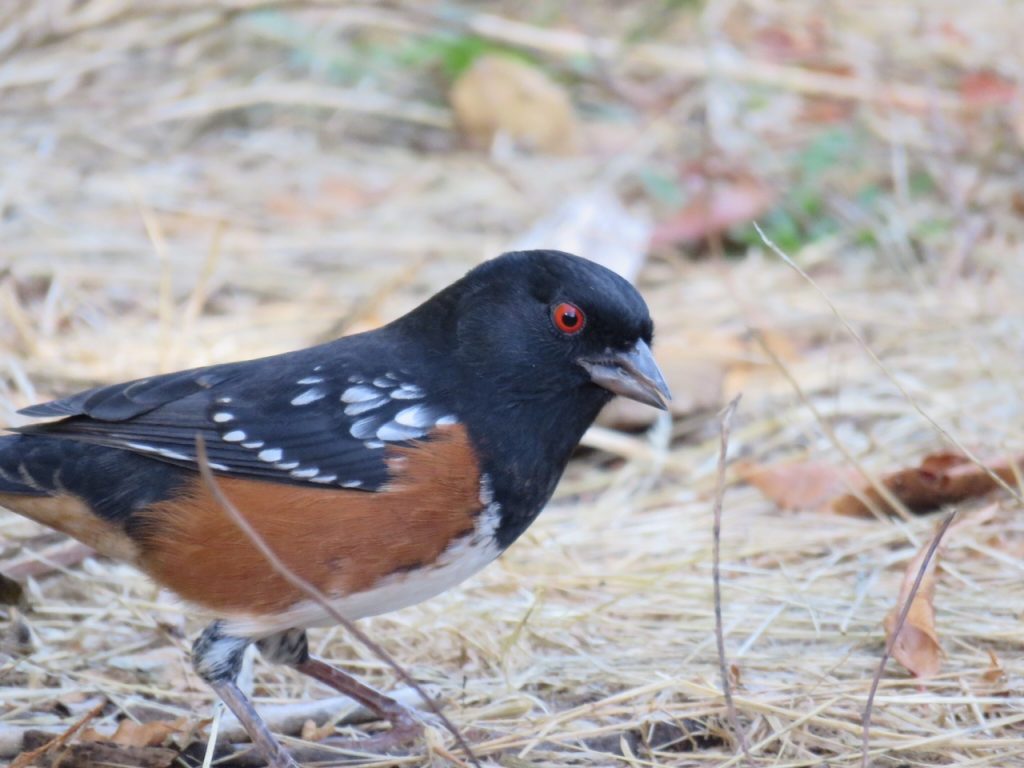
Nesting season is April 1 through mid-July (mostly) and ground-dwelling birds are especially vulnerable to predators, as they nest either on the ground or in bushes close to the ground. One towhee nest behind bldg 6 and another in front of bldg 3 were taken out by cats last year. I have, rather ignorantly, stumbled into the nesting areas of birds at Coho, completely unaware of the way they communicate: “Get away from my nest!” So that you can benefit from my mistakes, I will do my best to explain how I hear them communicate.
The towhee nest behind bldg. 6 was right next to a garden path and completely invisible. I must have frightened mom off the nest four times before I figured out that the nest was in the spot on the ground she flew from—not in the bushes, from which she gave a steady, insistent “wraaaa,” obviously an alarm. However, the alarm she gave when a human neared her nest was NOTHING compared to the C-A-T alarm! The morning the nest was raided, the ruckus was devastating to hear. I was asleep in bed and by the time I figured out what was happening, I thought it was too late to go down and stop it. Weeks later, I heard a similar altercation not far from my front door and ran out to scare one of the feral cats off. A few days later, it happened again in front of bldg 3, and I ran out to chase the cat off. Given that the cat seemed to know where the nest was and the bird appeared more traumatized, I suspect the cat won. The cat alarm is a loud, desperate, ‘I’m gonna die trying to protect my babies’ type of cry–you can’t miss it! The nest was in the reeds in front of bldg 3, where you might not imagine a nest would be.
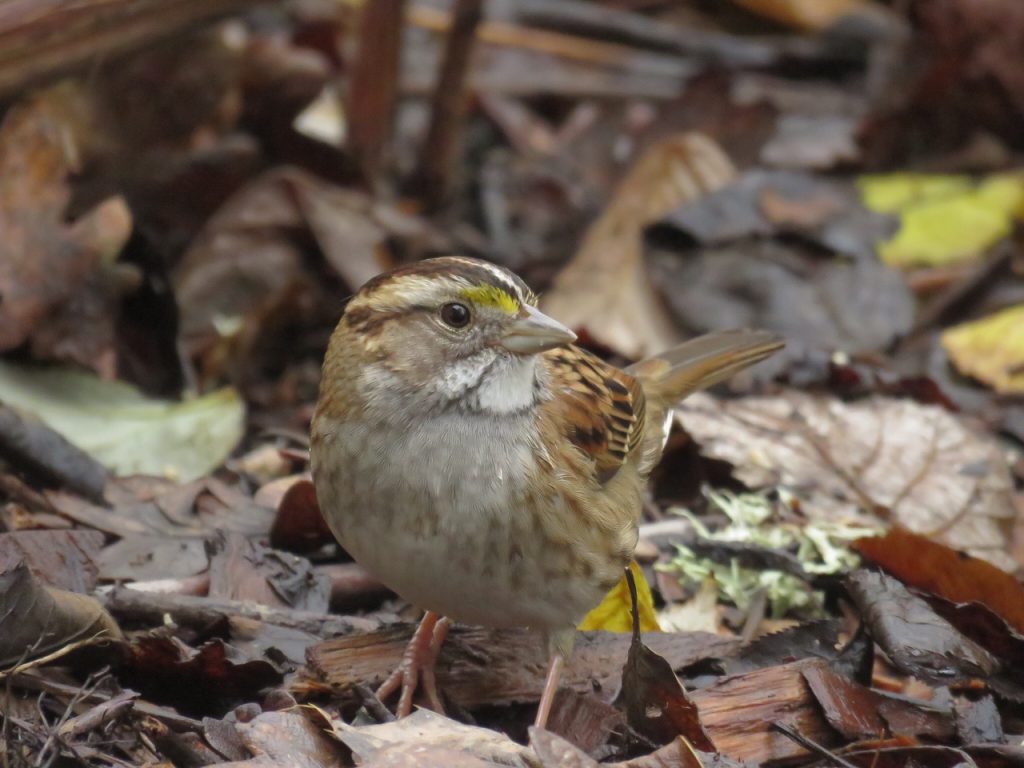
A few years ago, I had a similar encounter with another low nesting bird, the Swainson’s thrush. I was unknowingly sitting each morning next to a snowberry bush with a nest in it. I noticed that Swainson’s thrushes were flitting about in the trees all around making their “wheet” calls. I thought they were lovely. Then one day I heard a sound next to me in the bush, looked in, and found a beautiful nest with eggs within arm’s reach. I stopped sitting next to that bush. After a few days, I found the nest toppled over and the eggs gone. I discovered a couple of years later that the “wheet” call, which I could duplicate and “talk” to Swainson’s thrushes with, was an alarm cry. I had been “wheeting” with them for several years. The awkward story of how I made this discovery (by starting an interspecies bird riot) can be found here.
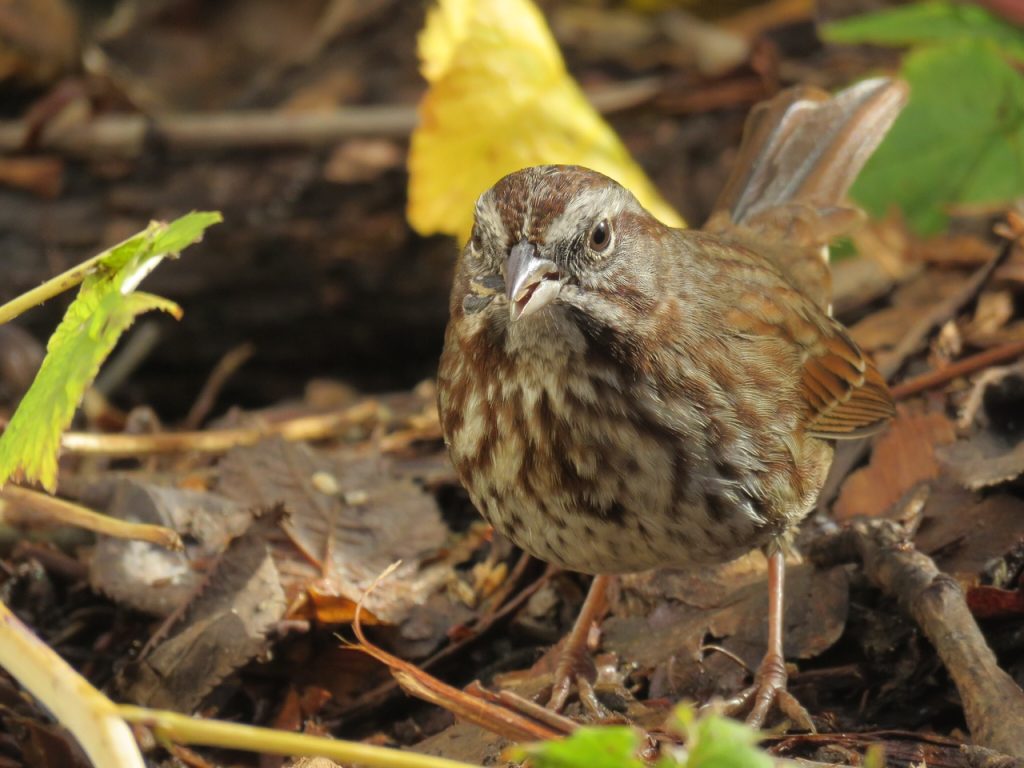
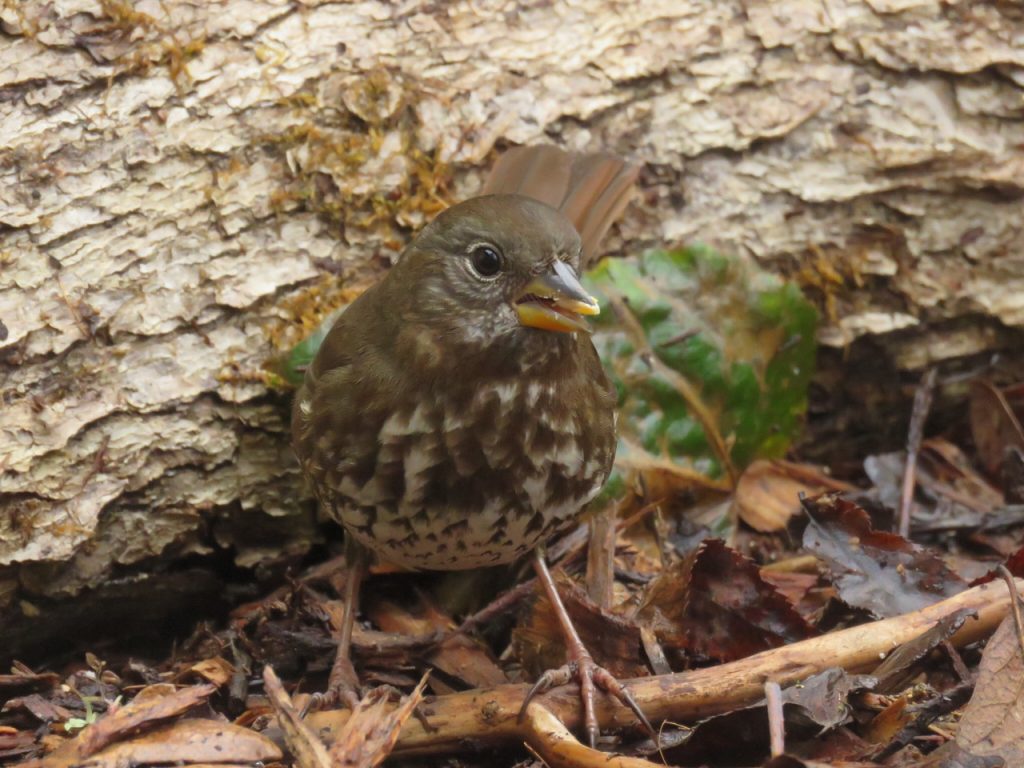
HOW CAN YOU HELP our ground nesting neighbors?
- AVOID walking your pets through and near wildlife areas during nesting season (April 1 — mid-July). Besides the intentionally planted wildlife corridors, birds also nest all along the top of Crystal Lake and down the back paths, in the berms behind the compost bins, and in the wooded areas.
- Anytime you see a cat near the wildlife corridor, scare it off. It is actively hunting for birds and nests.
- Start paying attention to bird calls that appear insistent, repetitive, and place specific—they are talking to YOU!
- If you hear a loud, desperate bird crying aggressively and repeatedly (except for house sparrows, which fight all the time, and you can probably recognize their scuffles) look for the cat, and run it off.
- If you spot a nest, any kind of nest— on the ground, or in shrubs or trees—don’t stare at it. Corvids, jays in particular, are watching you. If you find something interesting, they get curious about it, and they are nest raiders.
- If your pet scares up a ground nesting bird, and you notice the bird ALARM, stop walking your pet by that site. Every time a nesting bird sounds the ALARM, all the predators in the area are paying attention, and now know where to look. Send an email notifying your neighbors about the nesting site.
Of course, I’m excited when I find a nest, and you probably are, too. I try to look from inside the house with binoculars, or face away from the nest and try to peek with a side glance, so as not to alert predators. Now that you know you are being watched, you will never feel alone outdoors again.
We have created a lovely wildlife corridor to successfully attract our native birds. Let’s all work together to protect the birds who feel at home enough to nest and spend winter vacations here at Coho.
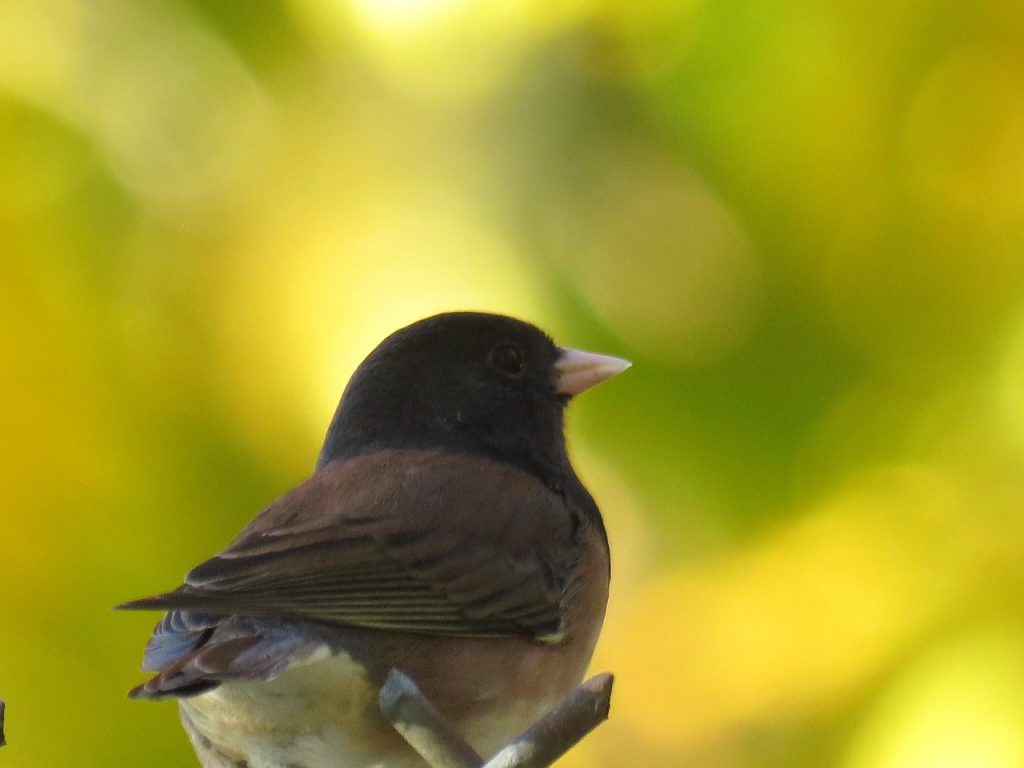
By Leela Devi
Thanks for this info. on ground-nesting birds. To my dismay, yes, about three days after I discovered a junco’s nest near the door to our backyard garden, a nocturnal predator raided the nest of its four eggs. I didn’t want to relive my nervous grandma experience – nor allow the birds to re-nest in the vulnerable spot – so I removed the empty nest. Sadly, several juncos flew into the maple above and saw me do this. Since then, I haven’t seen or heard any juncos in my back garden or on the street. What is going on? Will the juncos return?